Guest Post by Paul Nicklen | True at First Light

This is a guest post by WWSG exclusive speaker, Paul Nicklen.
How Soaring High Above the Colorado River Delta Restored My Appreciation For Nature’s Beauty
“Once you have tasted flight, you will forever walk the earth with your eyes turned skyward, for there you have been, and there you will always long to return.”– Leonardo da Vinci
Every time I soar above the delta where the Colorado River trickles to an end before reaching the Sea of Cortez, I am reminded of how eerie, and mysterious, and enchanting nature’s beauty can be. The patterns, shapes, and designs of silt and sediment shaped by the ebb and flow of the tides are achingly beautiful. There is beauty here, and raw power, the power of the natural world to move and stir deep emotions and self-reflection.
As it reaches the end of its 1,500-mile pilgrimage to the sea, the continent’s mightiest river slows and ebbs into a lacework of bending, winding channels, inspiring a profound, unspoken respect for the way nature is full of surprises. The sense of connection I feel here is unparalleled, so much so that I now understand the fierce, protective loyalty people who live here feel for the river, its place in geological time, and the way it has become the stuff of myth and legend. Every time I am here, I feel reinvigorated, spiritually and creatively. This is a place of ancient dreams and old spirits.
Seeing the delta from high above is to see the world as it must have been from the beginning of time. I have seen how quickly our wild places are disappearing, and if there is one thing I hope my images have done over the course of my career, it is to heighten awareness of the deepening crisis we all face and, more importantly, encourage us to act. The beauty here is so profound, all things seem possible.

This, after all, is the work of nature, Earth’s first, true artist. Layers of sandstone, siltstone, and mudstone weave an intricate web in an image I call Amber Crossroads, a living painting, an abstract work of art divined by nature’s hand and realized in a sprawling, fine-grained canvas of reds, mauves, and bronze.
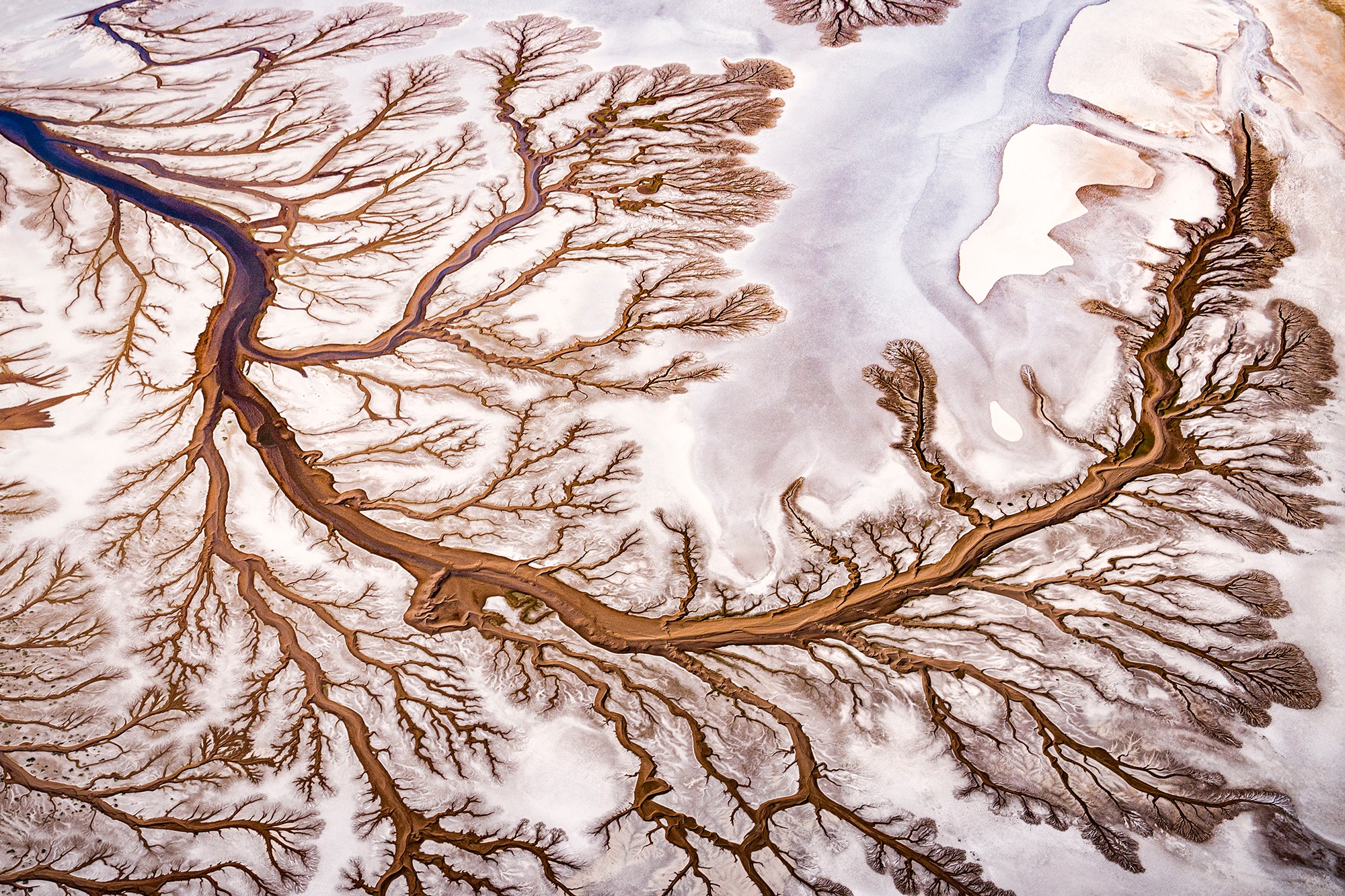
Written in Water is one of the defining images of the Delta Series for me, a clear example of how the sea is striving to reclaim the earth’s crust, leaving its signature scrawled through the ebb and flow of the tides.
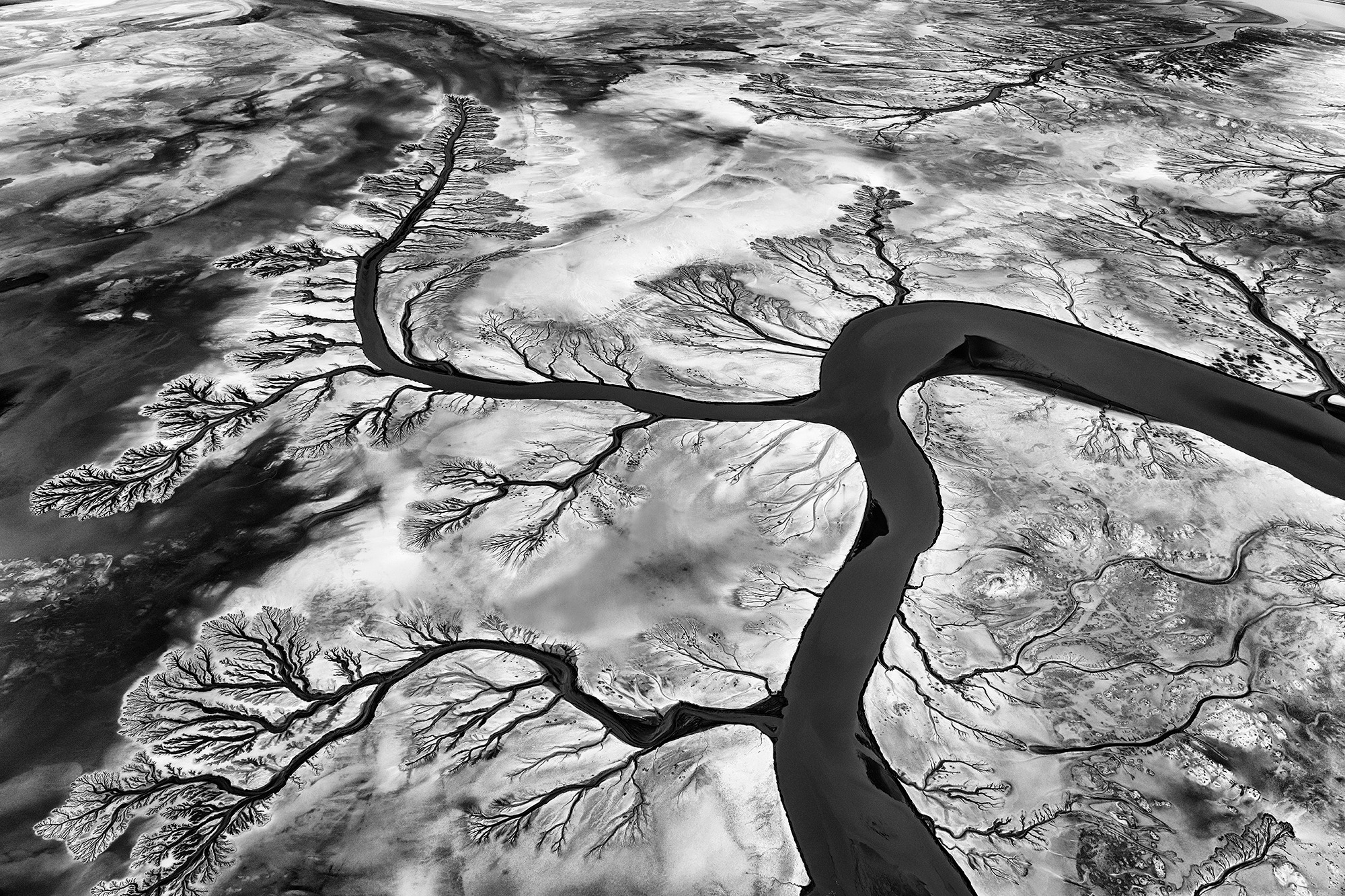
The fractals branching across the surface of the delta in Arterial Poetry remind me of the veins of the human body, a sublime expression of how water is the lifeblood of everything that lives in this world.
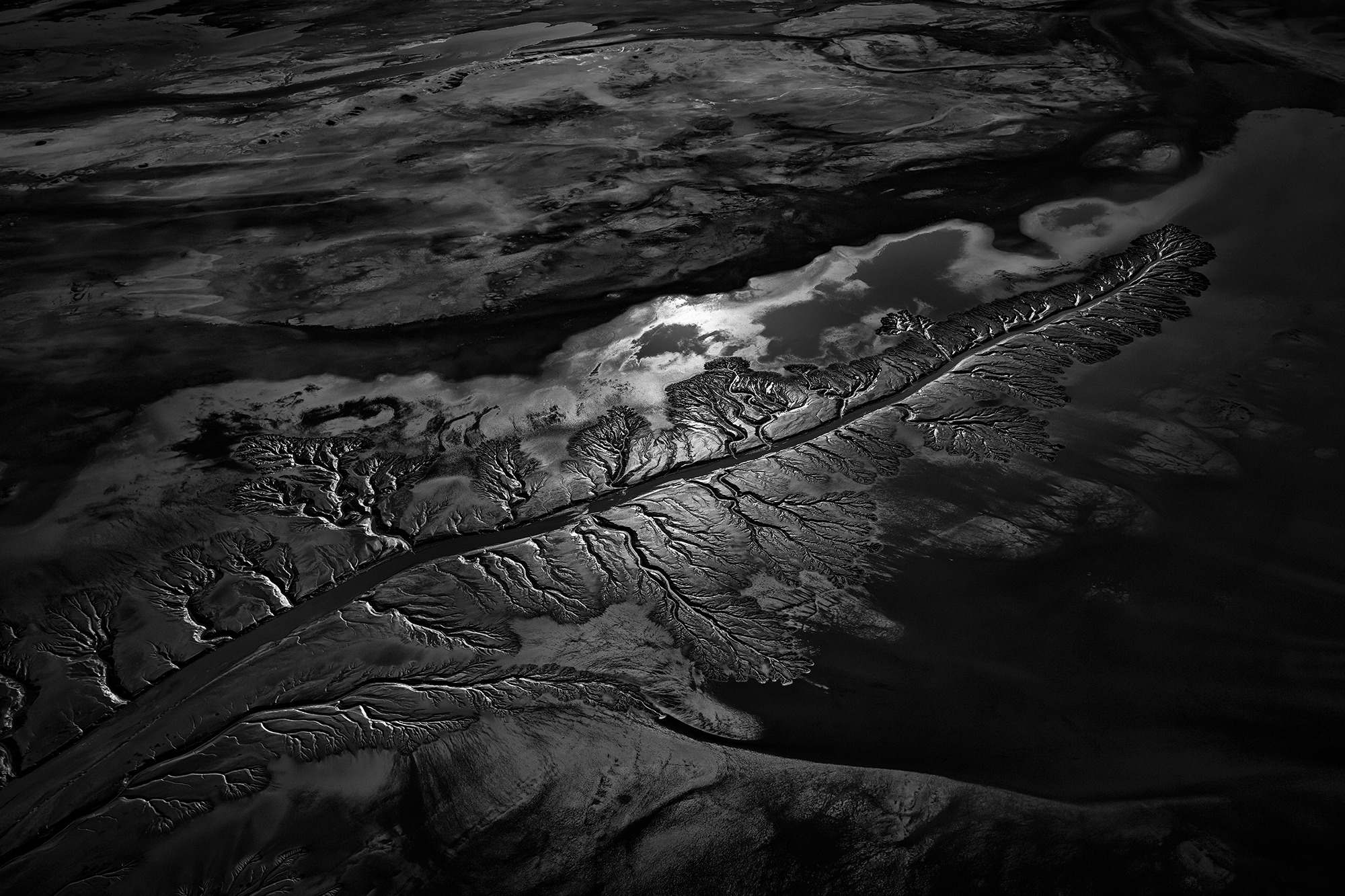
Arterial Shadows, another study in black-and-white, shows in stark and yet seductive terms how rising coastal tides, 10 feet deep in place, reach far inland to create a moody pattern of rock and sediment. It’s a sight that never fails to take my breath away, often literally.
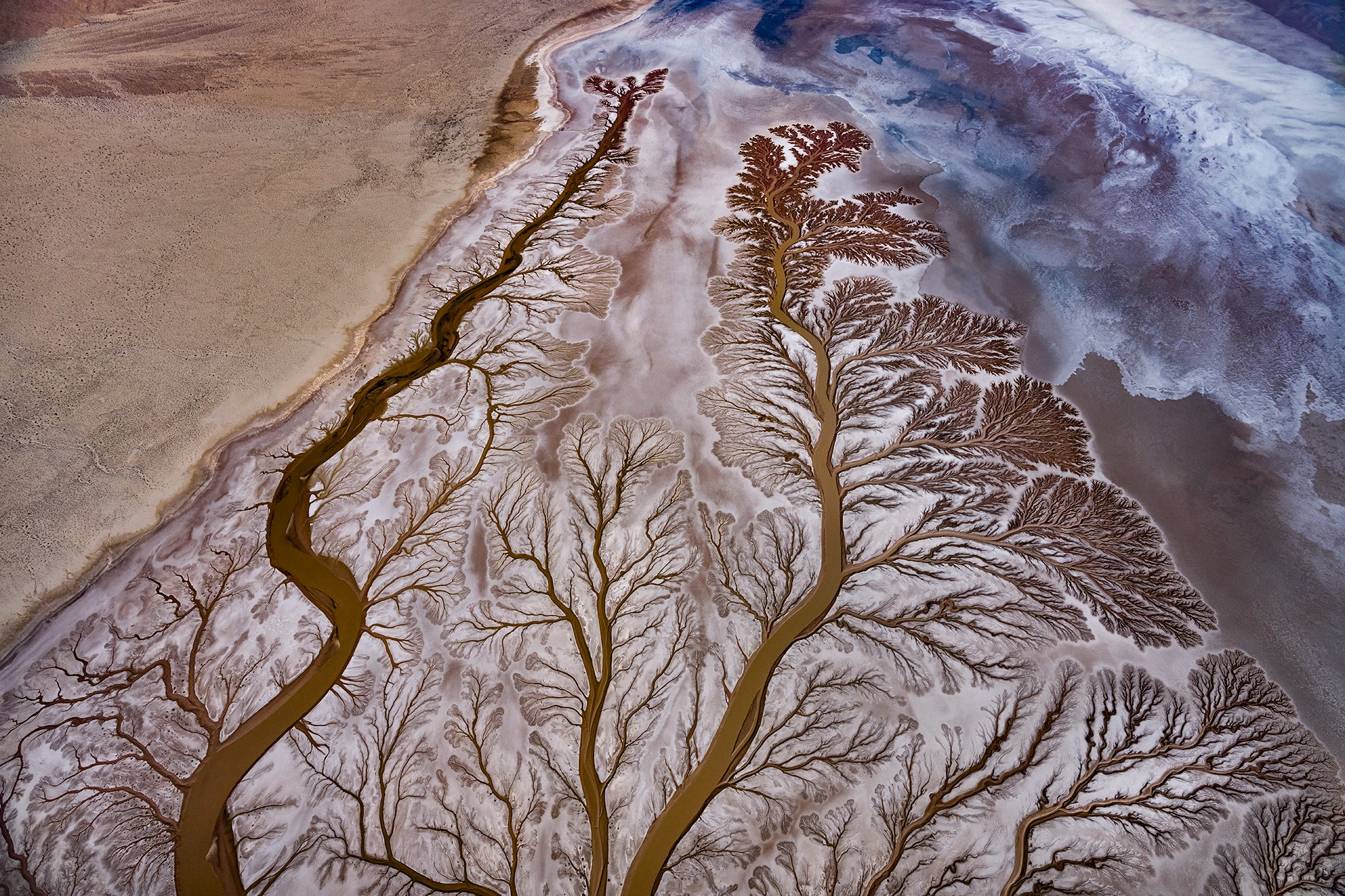
Gaia’s Lungs resembles the uncanny parallels between the bronchial structures within our lungs that allow us to breathe and the structures of the plants that produce our oxygen– a poignant and powerful metaphor for the interconnectedness of all life.
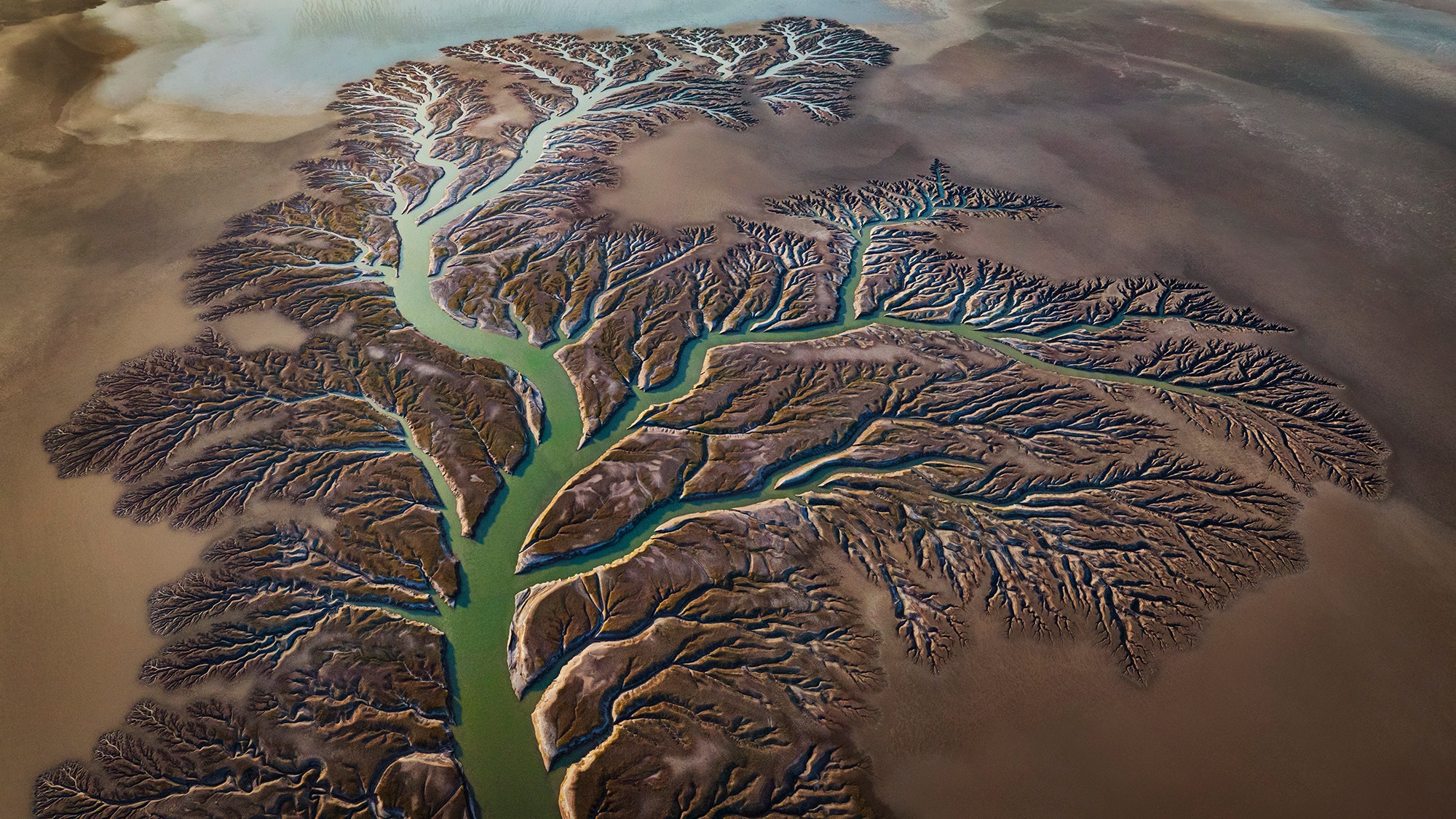
I feel exhilaration, too, when I look at Arbol de Vida, as if I had photographed it just yesterday. The elaborate designs come alive in the mind’s eye; the meltwater serves as the connective tissue of the entire delta — a masterpiece created by nature.
Viewing these patterns and formations from 6,000 feet above the Earth’s surface satisfies my creative urges in ways they have not been filled in a long time. In my last expedition, over the course of four days, I shot more than 14,000 images — and I was trying to exercise restraint. My mind was constantly distracted by some new wonder or other. It is not enough to describe it as eye-filling; it is on a scale that reaches back to the dawn of time. One formation I photographed was more than two miles long — a picturesque panorama of patterns within patterns, a vast mural of nature’s majesty and splendor. The delta’s 240,000-square-mile drainage area alternates between the primeval and the modern age. The dendritic channels of sand and silt carved by the ebb flow of tidal currents are reminders of pristine wetlands that once nourished an entire ecosystem.I am reminded, too, that these patterns and shapes, these symbols of nature’s resilience and determination to survive, are commemorative of how small we are.As a species, we are inseparable. Each and every small thing we do affects someone else. After thirty years of exploring the polar regions and countless places in between, I have seen with my own eyes how our wild places are disappearing, and the alarming rate at which we are consuming the world’s resources. We have a shared responsibility to ensure that future generations will see the world as we did, or else it will all have been in vain. Here, in one of the last, vast bastions of life on Earth, it is easy to believe that all things are possible.With gratitude,

